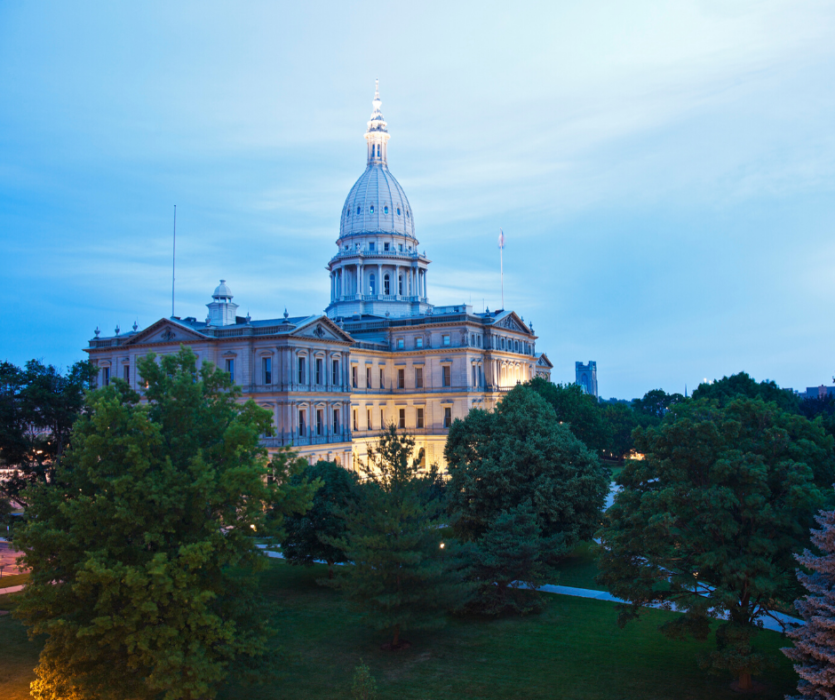
Gov. Gretchen Whitmer Monday touted a $2.1 billion MI New Economy plan to help small businesses and workers capitalize on a growing economy, but businesses are still dealing with pandemic-related echoes that color the localized perspective.
Whitmer said the Michigan economy was growing by leaps and bounds with 150,000 new small businesses filing applications in 2021 and creating 170,000 jobs. She said her economic plan would help build on the momentum to help small businesses in the state.
“Small businesses form the backbone of Michigan’s economy and are the anchors of communities across the state. Through tough times, they’ve shown grit and innovations to continue getting things done for their customers and employees,” she said.
Small Business Association of Michigan President Brian Calley echoed Whitmer in saying small businesses serve as anchors for communities.
“One thing that I think is becoming more and more clear is that small businesses ought to be the main focus of economic development. They tend to be kind of an afterthought,” Calley said.
However, he said there were still the big issues with Inflation, supply chain disruptions and workforce shortages.
To punctuate the last point, Michigan’s labor participation rate is lower than 60%. In “top-performing” states, prior to the pandemic, that number was closer to 70%. With an aging population and workforce to go with a state population that isn’t growing very much, Calley said there are limits to improving workforce participation to fill positions and grow businesses.
The sentiment was echoed in a poll released Monday from the Michigan Restaurant and Lodging Association.
Small businesses are still hiring, and the worker shortage has created a boon for worker wages. Unemployment isn’t an issue currently. March’s level was at 4.4% and teens are expected to reenter the workforce this summer.
“Students, I think, are finding themselves in a position to have a lot of leverage in being able to walk into positions at levels that would have been unheard of for somebody with little or no work experience just a few years ago,” Calley said.
Even though businesses are rebounding and the unemployment numbers in the state are returning to pre-pandemic levels, National Federation of Independent Businesses Michigan Director Amanda Fisher said any gains being made are only being lost to inflation and higher labor costs.
“Unlike bigger businesses, who have a better ability to handle these things,” Fisher said. “I have heard of some small business owners who have had to take a second mortgage to pay their employees.”
She said the Governor needs to give money, through tax breaks, back to small businesses and help shore up the workforce.
“We don’t need more government programs, but we need people to show up and work,” she said.
The MI New Economy plan would create some of those government programs, including the Michigan Mainstreet Initiative, which gives money to restaurants and place-based businesses. Another Michigan Economic Development Corporation (MDEC) program is the Start-Up Resiliency Initiative, which gives investments, grants and assistance to high-tech start-ups.
“No business is small to those who are putting it all on the line, and so we remain focused on creating pathways and opportunities for our entrepreneurs to realize their vision,” said MEDC CEO Quentin Messer Jr.
Perception of the economy
The national and state economic numbers seem to be on track to return to pre-pandemic levels, but the perception of the economy from the public doesn’t seem to match.
Economist Chris Douglas said that perception was something that depended largely on education and where people lived. However, inflation could color people’s perception more than any other issue, because it is something that impacts them personally.
“Inflation hits everyone, rich, poor, middle class. Everyone pays higher prices. I just drove by a gas station and the gas is $4.59 a gallon. There is no way of avoiding that,” Douglas said.
He said following the Great Recession, which ended in June 2009 after the housing bubble burst, there was a lag in the recovery in the country. He pointed to unemployment continuing to rise well after the recovery.
He said the people in the more densely populated areas saw the recovery quicker than those in rural areas.
“We saw some of that divide in the 2016 election where [Donald] Trump got the rural voters, while Hillary Clinton got the urban and college-educated voters,” he said.
Douglas said the current inflation was following the same lag trend, where the perception of the economy lags behind the market.
“You have something happen, then inflation or unemployment change and then people’s perception change about the economy as a result of that,” he said.